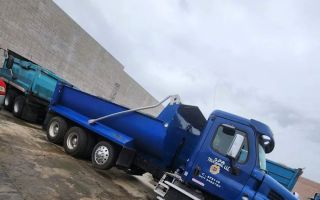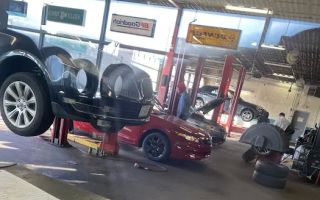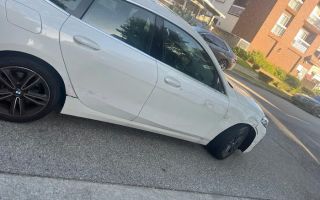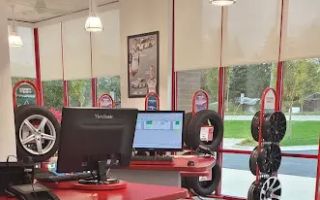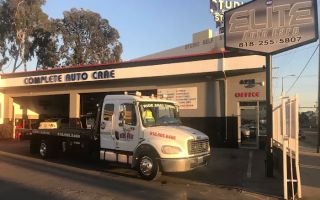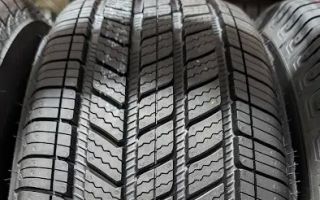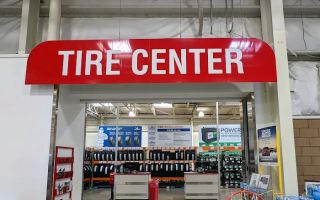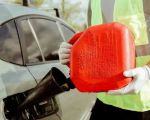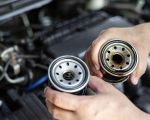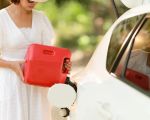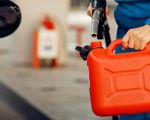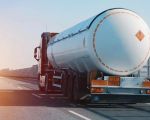How Do I Confirm the Fuel Type for Emergency Delivery? A Guide to Getting the Right Fuel When You Need It
- Understanding Fuel Types for Emergency Delivery
- Steps to Confirm Your Vehicle's Fuel Type
- Common Issues When Requesting Emergency Fuel Delivery
- How to Prevent Fuel Mistakes in Emergency Situations
- Real-Life Story of Emergency Fuel Delivery
- Why Choose Rescue & Towing for Emergency Fuel Delivery
1. Understanding Fuel Types for Emergency Delivery
If you've ever found yourself stranded with an empty fuel tank, you know the importance of getting the right kind of fuel delivered to your vehicle. But how do you ensure you're getting the correct fuel type for your car when you request emergency fuel delivery? In my personal experience, not knowing the fuel type can lead to costly mistakes or delays. It's essential to confirm your vehicle’s fuel type before making an emergency request to avoid errors. For most drivers, knowing whether you need gasoline, diesel, or another fuel type is a critical first step.
Understanding the differences between fuel types is key. For instance, gasoline engines are quite common in most cars, but diesel fuel is required for diesel engines, which are commonly found in trucks and certain vehicles like larger SUVs. There are also some specialized vehicles that run on alternative fuels, such as E85 (ethanol) or compressed natural gas (CNG). If you’re unsure of what your vehicle requires, here are a few tips to guide you through the process of confirming your fuel type during an emergency situation.

Fuel 4
720 Tonnelle Ave, Jersey City, NJ 07307, USA
2. Steps to Confirm Your Vehicle's Fuel Type
When you're in a rush or stranded on the side of the road, it can be easy to forget the basics, like what fuel your vehicle needs. However, taking a few simple steps can help you quickly determine the correct fuel type for delivery. I recall once when I was stranded with an empty tank and needed help, and these steps helped me get the right fuel delivered without further delay:
- Check the Fuel Door or Cap: Most vehicles have a label inside the fuel door or on the cap that indicates the type of fuel they require. If your vehicle requires premium gasoline, diesel, or something else, this label will give you the answer.
- Consult Your Vehicle Manual: If you're unsure about the fuel type, your vehicle's manual will always have this information listed. It’s a good practice to know your vehicle’s requirements beforehand, so you don’t have to scramble for answers in an emergency.
- Use a Smartphone App: There are several apps and online tools available that can help you quickly find the fuel type for your vehicle based on the make, model, and year. This is especially useful if you can’t find your vehicle's manual or label in the heat of the moment.
- Ask Your Towing or Emergency Service Provider: If you’re still unsure, you can always ask the roadside assistance or towing service you’ve contacted. They are usually well-equipped to handle these situations and can confirm the fuel type for you before sending out the delivery.
Following these steps will ensure you’re getting the right fuel for your vehicle, which can save you time and prevent any mistakes during an emergency delivery.

Nearest gas station
353 Smithtown Blvd, Ronkonkoma, NY 11779, USA
3. Common Issues When Requesting Emergency Fuel Delivery
While emergency fuel delivery can be a lifesaver, there are a few common issues that drivers may face during the process. From miscommunication about fuel types to delays in delivery, understanding these issues can help you be better prepared. I’ve had my share of issues when requesting fuel deliveries, and here are a few things to watch out for:
- Incorrect Fuel Type: One of the most common problems is receiving the wrong fuel type. This often happens when the service provider is not fully informed about your vehicle’s requirements. To prevent this, make sure you provide clear and accurate information when requesting the service.
- Delayed Response Times: Depending on your location, it may take a little longer for a fuel delivery to arrive, especially during peak hours or in rural areas. It's important to set realistic expectations and communicate effectively with your provider.
- Fuel Contamination: On rare occasions, fuel tanks can become contaminated, which can cause issues with the fuel you receive. To avoid this, always ensure that your vehicle is properly maintained, and double-check the quality of the fuel before refueling.
- Access Issues: If you’re parked in a difficult-to-reach area or the weather conditions are severe, emergency fuel delivery can be delayed or even impossible. Always ensure that the area around your vehicle is accessible, and be prepared to assist the service provider if needed.
4. How to Prevent Fuel Mistakes in Emergency Situations
Preventing mistakes during an emergency fuel delivery situation is all about preparation and communication. Here’s what I’ve learned from my experiences:
- Double-Check Your Vehicle’s Fuel Type: As mentioned earlier, always confirm the type of fuel your vehicle requires. If in doubt, don’t hesitate to ask your service provider for confirmation before they deliver the fuel.
- Stay Calm and Clear: When you’re in a stressful situation, it can be easy to forget the details. Make sure you stay calm and provide clear, accurate information when calling for help.
- Confirm the Delivery Location: Ensure that the delivery location is easily accessible and that there are no obstacles in the way. If possible, move your vehicle to a safer and more accessible spot.
5. Real-Life Story of Emergency Fuel Delivery
A few years ago, I found myself stranded in a rural area with no gas and no way to get to a station. I called a roadside assistance service, and they quickly arrived with the exact type of fuel I needed. It was a seamless experience, and I was back on the road in no time. The key to this quick resolution was that I confirmed the fuel type and made sure that I gave clear instructions about my location and vehicle model. This saved time and ensured that I received the right help promptly.
6. Why Choose Rescue & Towing for Emergency Fuel Delivery
When it comes to reliable and quick emergency fuel delivery, Rescue & Towing is the best choice. With years of experience in providing emergency roadside assistance, they are well-equipped to handle your fuel delivery needs, ensuring you get the right fuel on time, every time.
Need emergency fuel delivery? [Click here to learn more about Rescue & Towing and their services.](https://www.chucklesrescue.com)

